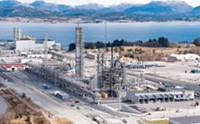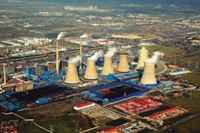Advertisement
Grab your lab coat. Let's get started
Welcome!
Welcome!
Create an account below to get 6 C&EN articles per month, receive newsletters and more - all free.
It seems this is your first time logging in online. Please enter the following information to continue.
As an ACS member you automatically get access to this site. All we need is few more details to create your reading experience.
Not you? Sign in with a different account.
Not you? Sign in with a different account.
ERROR 1
ERROR 1
ERROR 2
ERROR 2
ERROR 2
ERROR 2
ERROR 2
Password and Confirm password must match.
If you have an ACS member number, please enter it here so we can link this account to your membership. (optional)
ERROR 2
ACS values your privacy. By submitting your information, you are gaining access to C&EN and subscribing to our weekly newsletter. We use the information you provide to make your reading experience better, and we will never sell your data to third party members.
Environment
Laying Out The Attainable
Climate Change: Major technology changes could still restrain global warming to a maximum of 2 °C above preindustrial levels, UN report says
by Cheryl Hogue
April 14, 2014
Holding human-caused global warming to an internationally agreed-on level is still possible, but it will require large-scale technological shifts, says a United Nations report released on April 13. That level, set at a climate summit held in Copenhagen four years ago, is an average global temperature increase of 2 °C above preindustrial levels by 2100.
“Only major institutional and technological change will give a better than even chance that global warming will not exceed this threshold,” says the report from the Intergovernmental Panel on Climate Change (IPCC). That’s because without additional action to reduce greenhouse gas emissions, emissions are expected to continue rising, driven by growth in global population and economic activities, the report says, which is focused on mitigation of climate change.
“The urgency is clear. Global emissions have to peak by the end of this decade,” says Jennifer Morgan, who was a review editor for the report’s chapter on international cooperation. “Further delay will not only increase the severity of climate impacts but it will drive up the costs of reducing emissions,” says Morgan, climate and energy program director at World Resources Institute, a think tank.
Greenhouse gas releases from human activities between 1970 and 2010 represent about half of the cumulative emissions since the Industrial Revolution began about 1750, the report says. Carbon dioxide from fossil-fuel burning and industrial processes accounted for about 78% of the total increases in greenhouse gas emissions since 1970, it adds.
Natural gas offers a route to significantly reduce CO2 emissions from energy use, the report says. This would involve replacing coal-fired power plants with “modern, highly efficient natural gas combined-cycle power plants or combined heat and power plants.”
This changeover would hinge on the availability of natural gas and would require controlling fugitive emissions of natural gas, which come with extraction and supply methods such as pipelines. Natural gas is composed mainly of methane, a greenhouse gas. It produces less CO2 per unit of energy when burned than coal does.
The report also points to “substantial mitigation opportunities” for greenhouse gases other than CO2, notably methane, nitrous oxide, and fluorinated synthetic chemicals, such as hydrofluorocarbons used as refrigerants.
The report, which focuses on mitigation of climate change, is the third of three that the IPCC has issued in the past seven months. The other reports examined the science of climate change and adaptation to it. Together, the reports constitute the IPCC’s fifth assessment since 1990. The assessment is expected to influence global negotiations on a new climate treaty, which is scheduled to be completed at the end of 2015.




Join the conversation
Contact the reporter
Submit a Letter to the Editor for publication
Engage with us on Twitter